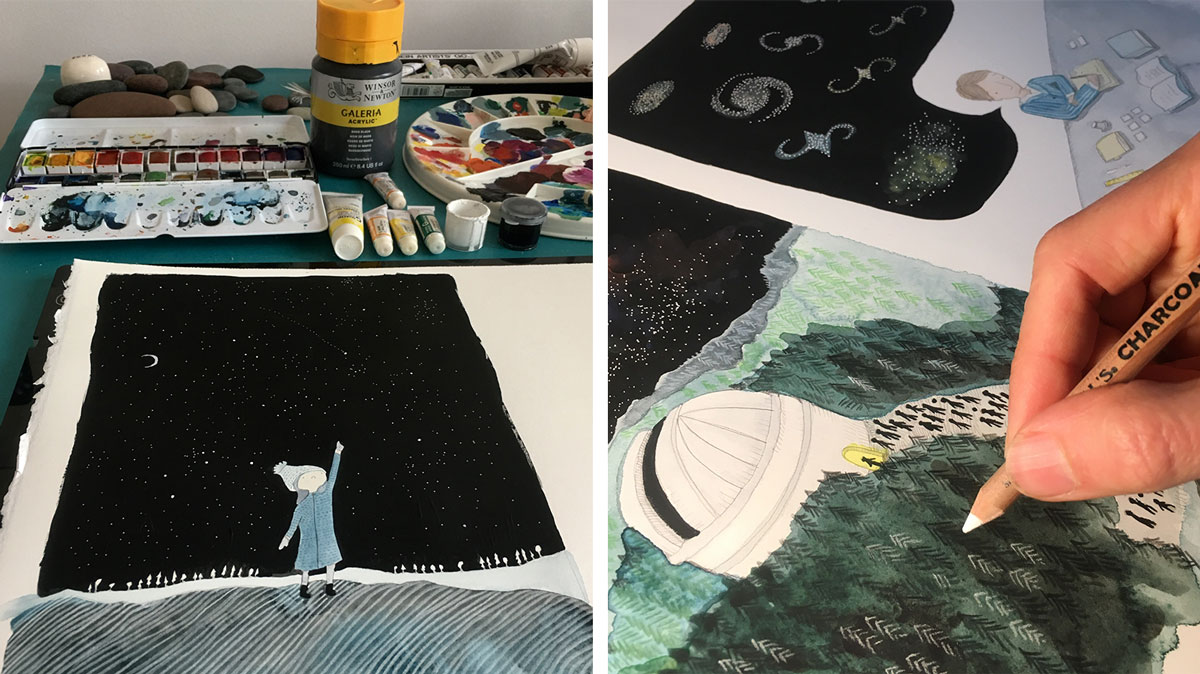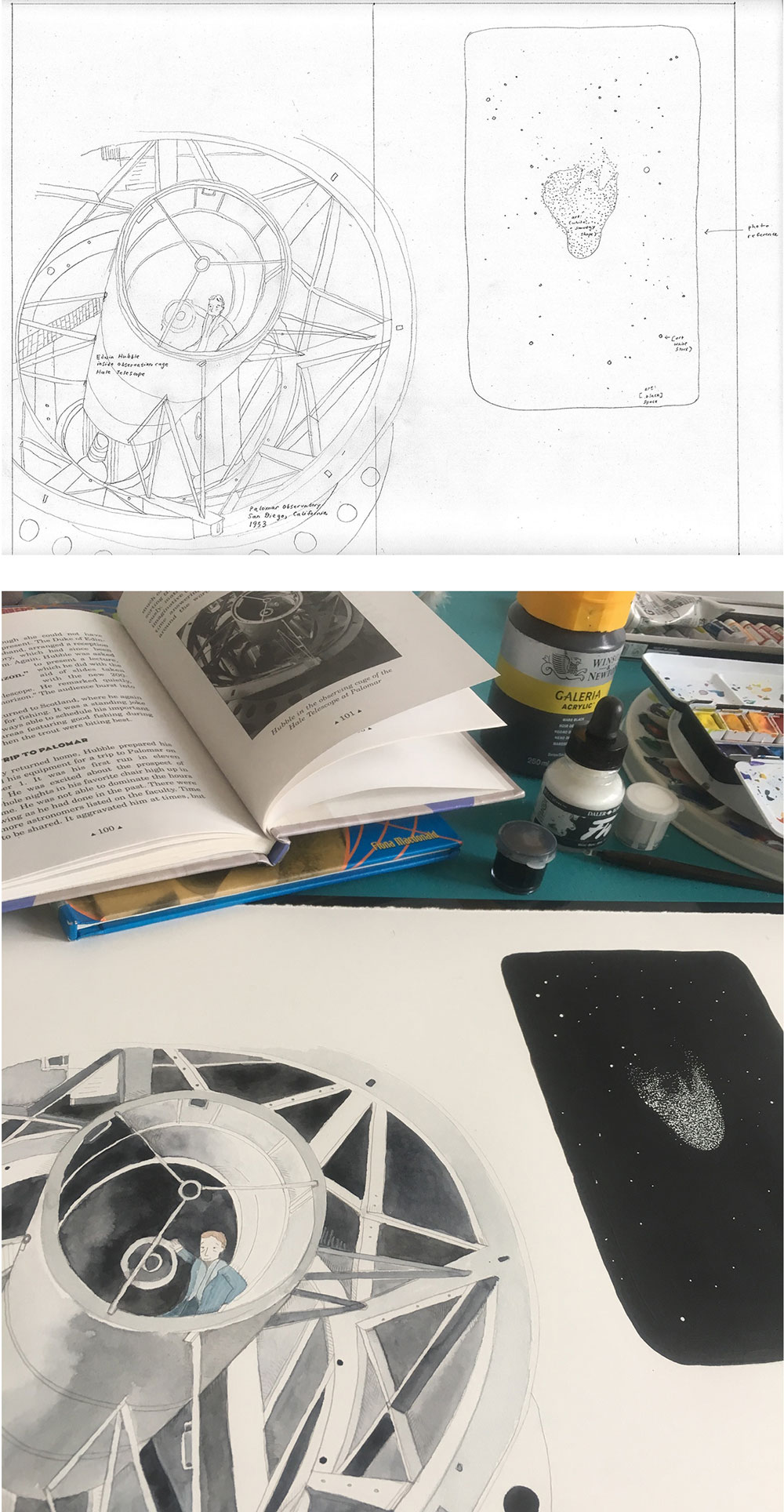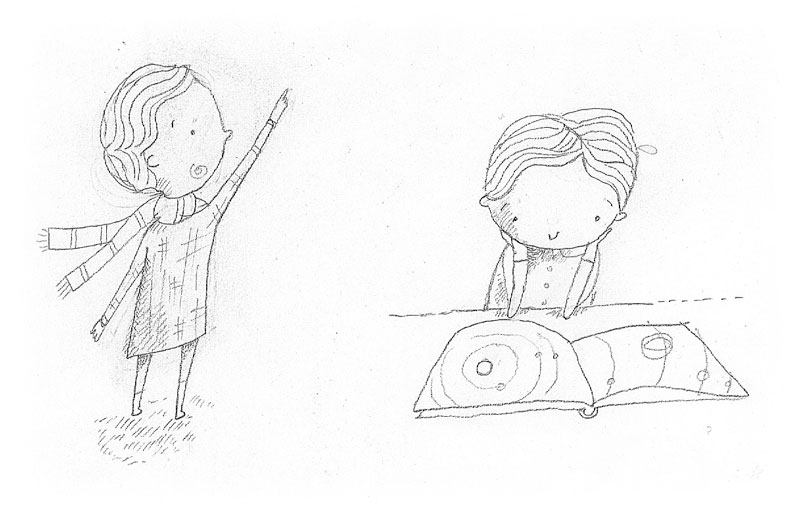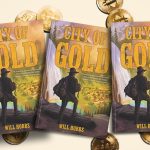It might seem like a daunting task to illuminate the vastness of the universe in a compact picture book, but the author-illustrator team of Isabelle Marinov and Deborah Marcero pull it off with the title The Boy Whose Head Was Filled with Stars: A Life of Edwin Hubble (Enchanted Lion, 2021). Their biography manages to be as far-reaching as the cosmos while still intimately focused on the life story of one man—the very person who showed the world how much more immense the universe is than people had previously thought. The title has earned several high honors, including being named to the New York Public Library’s Best Books for Kids list for 2021, The Marginalian’s list of Loveliest Children’s Books of 2021, the Bank Street College of Education’s list of Best Children’s Books of 2022 (noted for Outstanding Merit), and the Air & Space Magazine Best Children’s Books of 2021 list.
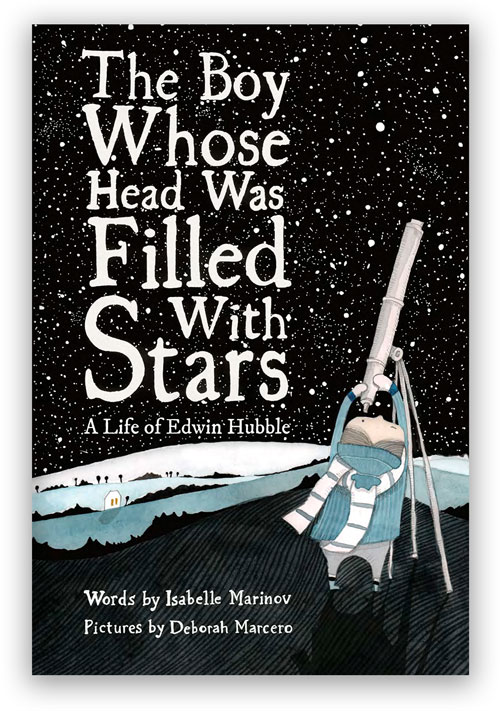
Here, both Marinov and Marcero talk with Lisa Bullard about the challenge of capturing such a gigantic concept in a picture book, their individual creative contributions to the title, and the importance of cultivating curiosity in young readers.
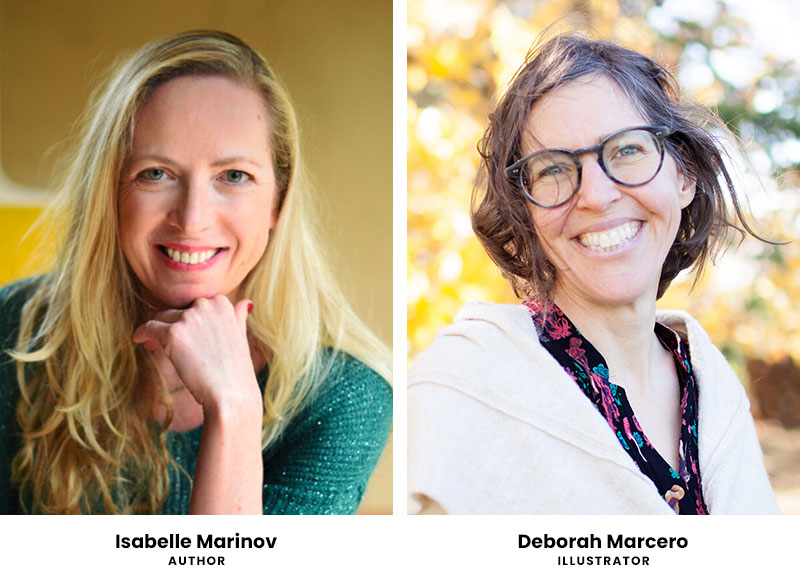
Isabelle, can you talk a bit about your inspiration for the title and the process of shaping such a big idea into a package as compact as a picture book?
I came across Edwin Hubble’s biography by chance when I was researching another story, and I became fascinated by his desire to pursue his dreams of becoming an astronomer—despite the many obstacles he had to face—and by his discoveries that completely changed our place in the universe. Before Hubble, it was thought that our galaxy, the Milky Way, was the entire universe. In 1924, he found the proof that the Milky Way is just a speck of dust in this unbelievably vast cosmos … what a shift in perspective!
We’re so incredibly insignificant, and yet we are all part of this amazing universe, down to the very atoms in our bodies. I immediately knew that this idea of the “cosmic perspective” (a term coined by Neil deGrasse Tyson) was going to be the story’s main thread, together with the idea of curiosity.
Picture books are very challenging to write because they are so short. As a writer, you really need to get to the essence of the story. Especially in nonfiction, there has to be a strong emotional theme. Otherwise, it will only amount to a collection of facts.
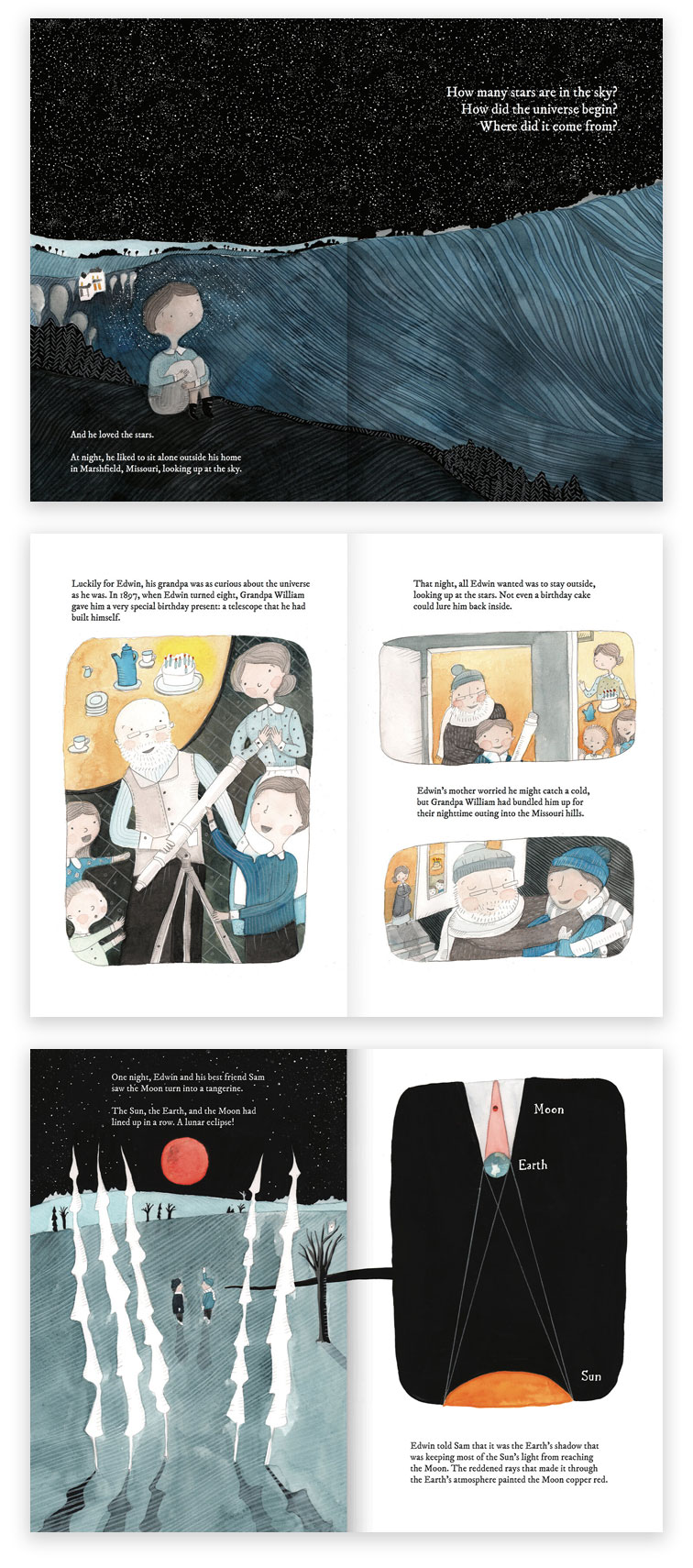
Picture books are very challenging to write because they are so short. As a writer you really need to get to the essence of the story. Especially in nonfiction, there has to be a strong emotional theme. Otherwise, it will only amount to a collection of facts.”
— author Isabelle Marinov
Deborah, what tactics did you come up with to create illustrations that both focus on an individual life story and also convey the limitlessness of the night sky?
I used fine pencil lines on hot press watercolor paper as the underlying framework for all the images. From there, I painted into those drawings with opaque black acrylic for the night sky and translucent watercolors. I then added colored pencil, gouache, white ink, and white charcoal on top of the paints to give texture and additional depth to the images. I limited the palette to cool blues and blacks and greens to capture the time period and the evocative mystery of night and outer space. The warm tones of orange, yellow, and red add contrast to emphasize discoveries and story moments along the way.
The biggest challenge of illustrating this book was showing the science. Reading about the astronomy concepts that Edwin was encountering and discovering is one thing. But then coming up with ways (in a style true to the story) of illustrating them so that kids (and adults) could understand them with ease was a much more difficult task. Concepts like showing how galaxies are moving away from each other, what happens during a lunar eclipse, and the shapes of galaxies were all concepts I knew vaguely about, but through illustrating them, I truly learned them.
As I was drawing different scenes, certain historical questions came up that I didn’t know the answers to. Would Edwin have birthday candles on his cake in 1897? What would a handmade telescope look like in 1897? What kind of clothes would Edwin be wearing in rural Missouri at that time? I found a handful of old black-and-white photographs from biographies of Hubble, and I also researched archives from the Smithsonian and the Library of Congress to support my visual decisions.
Concepts like showing how galaxies are moving away from each other, what happens during a lunar eclipse, and the shapes of galaxies were all concepts I knew vaguely about, but through illustrating them, I truly learned them.”
— illustrator Deborah Marcero
Deborah, it sounds like research was a huge part of the process for you. Can you tell us more about what you had to investigate to bring the story to life?
My research process involved reading about Edwin Hubble and also scouring archives for visual resources to reflect his time and the science of the early twentieth century. In addition to Hubble’s life, I researched the historical, astronomical, and scientific context of his youth to learn more of what was understood about the universe at the time.
My biggest research challenge was making sure the understood science of the early 1900s reflected what Edwin would have been learning about. We know so much more now. But what was understood then? Before Edwin’s discovery in 1923, humans believed the Milky Way was the entire universe. I knew the universe was a vast and gigantic place, but I had never tried to understand how big it really was. Wrapping my mind around the size of the universe was a humbling and awe-inspiring experience. The process of discovery and attempting to render a glimpse into the universe’s vastness evoked so much wonder—wonder that I tried to infuse and capture in my lines, color choices, and compositions.
In the first spread of the book, I wanted to draw his family and a glimpse of his home life. I learned about his siblings and found out he had two sisters and two brothers. I then discovered that his younger sister, Virginia, died when she was very young. In consulting the research and Isabelle, we posited that Virginia would still be alive at this snapshot in time. However, that was also a powerful moment of context for me. Losing a young sister must have had an impact on Edwin, and I wonder if the loss motivated him in his questioning of the universe. I don’t know. But this small detail stayed with me as I drew his face surrounded by stars.
The process of discovery and attempting to render a glimpse into the universe’s vastness evoked so much wonder—wonder that I tried to infuse and capture in my lines, color choices, and compositions.”
— illustrator Deborah Marcero
Isabelle, what about your research process? After all, you were tackling both complex scientific matters and a real-life story as you wound together the different elements of the book.
I relied on Gale E. Christianson’s excellent adult biography Edwin Hubble: Mariner of the Nebulae to help me shape Hubble’s life story for a younger audience. Once I had identified my two main themes—the cosmic perspective and the idea of curiosity—I knew what to focus on. Hubble made two groundbreaking discoveries during his lifetime that can be summed up in very simple words: First, the universe is so much bigger than we thought. And second, the universe is getting bigger all the time. In writing the manuscript, I focused first and foremost on the philosophical implications of these two discoveries. Later, when the first draft was done, Professor Roberto Trotta, an astrophysicist, came on board. We’d run the text as well as the illustrations by him every time there was the slightest change. I don’t have a scientific background (I am a lawyer by training), so it was very important to have a scientist double-check everything.
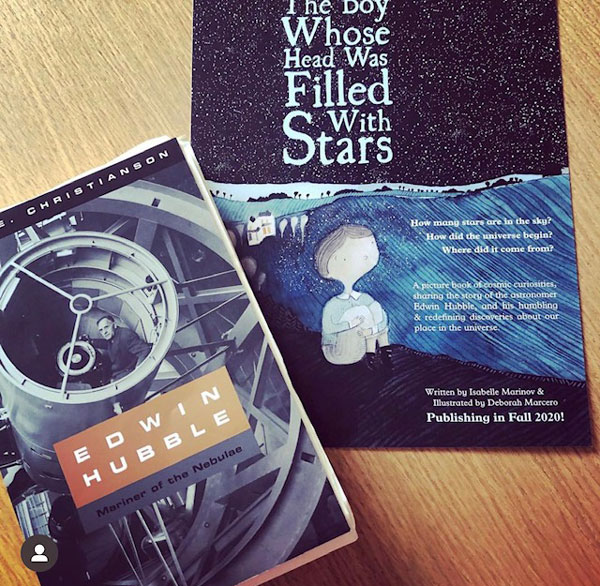
Isabelle, the book encourages young readers to be as curious as possible. How has curiosity shaped you as a person?
I was extremely curious as a child, and I still am. I never lost this sense of awe that I had as a child. That’s probably why I became a writer. The very act of being alive, on this planet, in this universe, is nothing short of mind-blowing. I think the moment you stop being curious, everything ends.
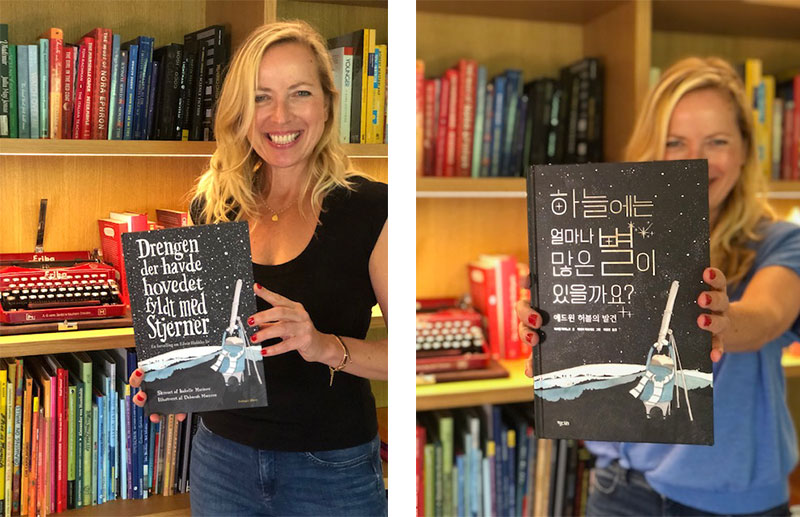
The very act of being alive, on this planet, in this universe, is nothing short of mind-blowing. I think the moment you stop being curious, everything ends.”
— author Isabelle Marinov
Deborah, do you have any thoughts for educators and librarians on how important it is to incorporate the arts into their teaching?
I have always loved learning and consider myself a lifelong learner. I am also a visual learner. I would encourage educators and librarians to teach science by using art. Explaining or hearing a scientific concept is one thing. Someone can read the information, but did they absorb it? By rendering the scientific concepts for The Boy Whose Head Was Filled with Stars, I learned so much about science and history. When a student can take a concept like a lunar eclipse or a black hole and illustrate it (or sculpt it, or act it out), they get to discover, experience, and even teach it, by showing that they know it.
Isabelle, what else are you working on?
I have another picture book, Leo and the Octopus (Templar, 2021), about an autistic boy who befriends an octopus at the local aquarium.
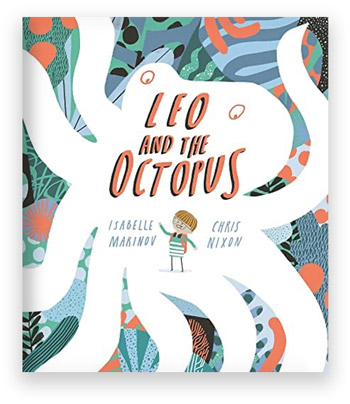
What else would you like to add, Deborah?
In addition to being an illustrator for special book projects like this one, I am also an author-illustrator. I have an early reader graphic novel series about friendship—the Haylee and Comet series—that is science fiction and astronomy related (there are three titles so far from Roaring Brook, published in 2021 and 2022). My most recent picture books as an author-illustrator are In a Jar (Putnam, 2020) and Out of a Jar (Putnam, 2022).
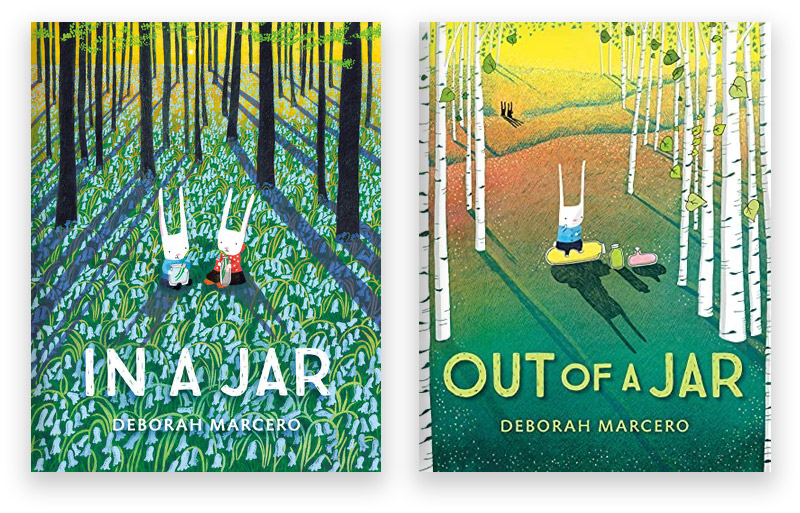
Deborah, what are the best ways for fans to connect with you or to follow you on social media?
You can find out more about my books and drawings at deborahmarcero.com. I’m also on Instagram and Twitter @deborahmarcero.
Isabelle, what about you—how best should readers connect with you or follow you on social media?
You can find me on Instagram at isabelle.marinov and on Facebook at IsabelleMarinovBooks. My website is www.isabellemarinov.com.

